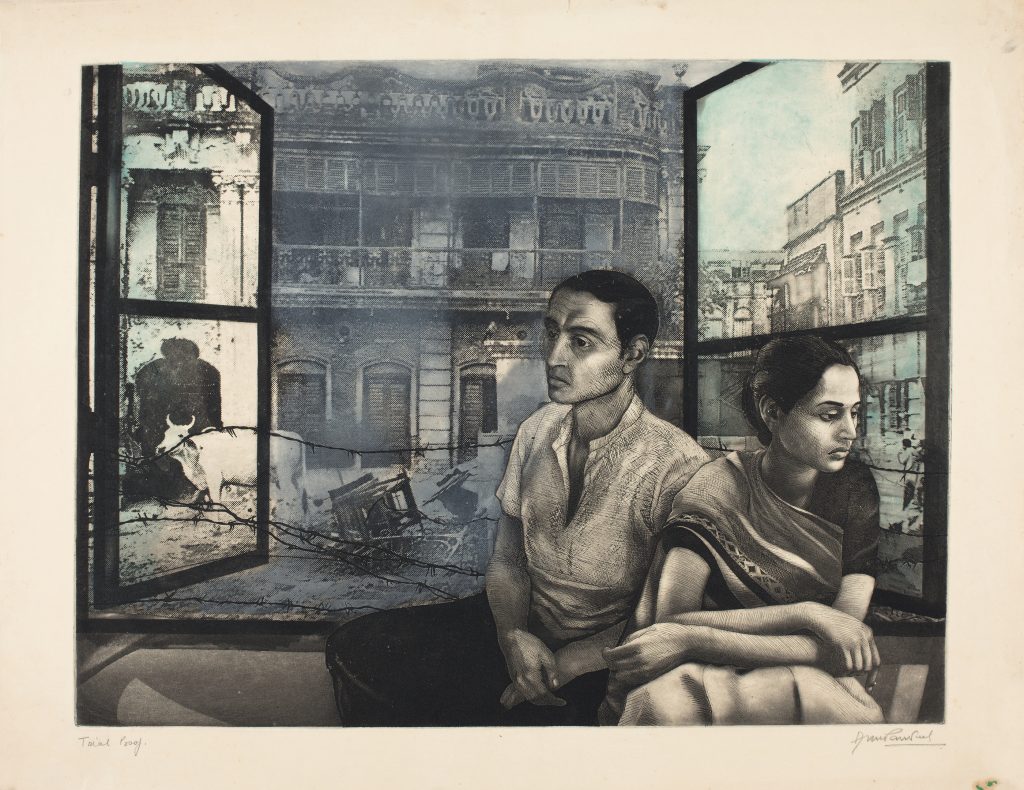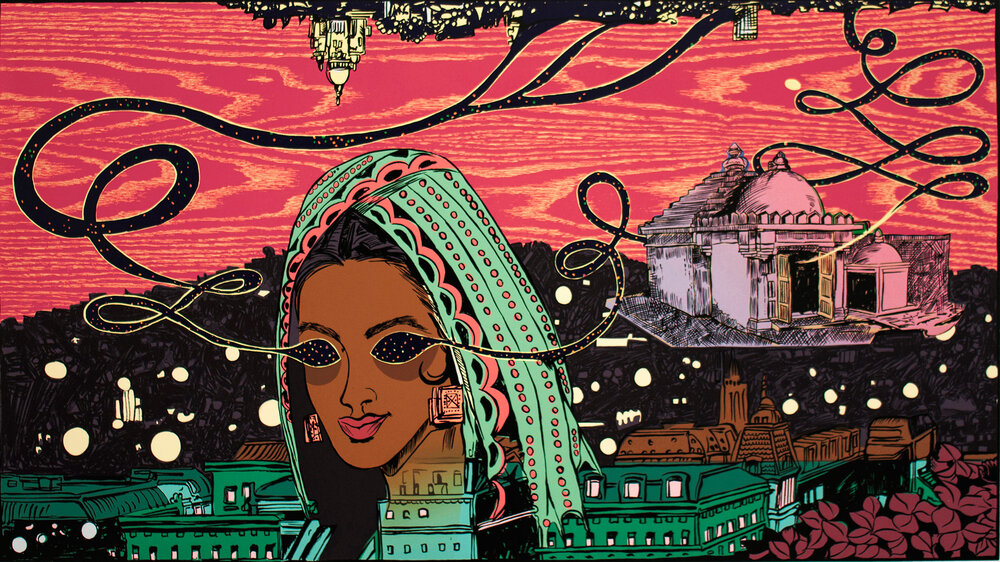Saptarshi Ghosh
Belonging to different eras and hailing from radically different backgrounds, Anupam Sud and Mary Cassatt are two artists who have left an indelible impression in the history of art. Sud is a veteran artist, who is considered one of the finest printmakers in India. Belonging to a conservative family, Sud’s commitment to her art over societal demands of getting married was both courageous and rare.
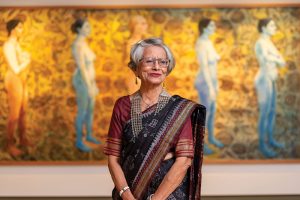
Courtesy: Open Magazine
Mary Cassatt is well-known for her association with the Impressionists in Paris in the late nineteenth century. “No woman has the right to draw like that,” Edgar Degas reportedly said, upon viewing Cassatt’s painting Young Women Picking Fruit (1891). Sadly, while history of art lionised figures like Edgar Degas and Camille Pissarro, significant women artists like Mary Cassatt were excluded from the canon and unfairly relegated to the peripheries.
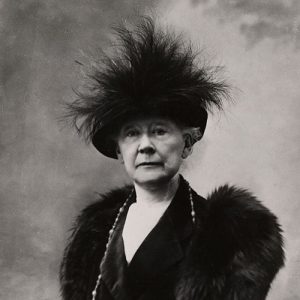
Courtesy: Smithsonian American Art Museum
This International Women’s Day, we at Abir Pothi celebrate the artistic achievements of both Sud and Cassatt!
Anupam Sud
One of the most versatile printmakers of India, Anupam Sud’s works tackle social issues like poverty and the interrelations between sexes, while commenting on the human predicament. Through her etchings, she depicts self-absorbed and brooding figures. One of the finest intaglio print makers in India, Sud blends her deep understanding of different intaglio processes with lithography and screen-printing. She uses zinc plates to perform her etchings – a tedious process that demands both patience and precision.
Born in 1944 in Hoshiarpur, Punjab, Sud studied at the College of Art, Delhi during the 1960s, when Somnath Hore was revamping the college’s printmaking department. She was the youngest member of Group 8, a collective of artists founded by her teacher, Jagmohan Chopra, to promote printmaking in India. After college, Sud, who had already shown promise, won two scholarships being offered by the British and French printmaking establishments. She opted for the one being offered by the British Council and in 1971, left for the Slade School of Fine Arts, London, where she trained in advanced printmaking techniques.
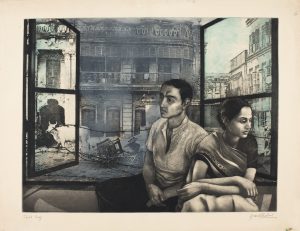
Courtesy: Eazel
Also known for her fine drawings and paintings, Sud’s works over the years have dealt with architectural forms, limbs, human figures and feminist themes. The Dialogue series, one of her well-known projects, explores human togetherness and dialogue through pensive-looking, moody figures. Sud fleshes out her figures with such finesse that they do not appear as a mere amalgamation of body parts; instead, the bodies seem to be vested with life that transcends their physicality. Subba Ghosh accurately points out how “the aspirations seem to escape the prison of the body, their inward gaze yearning to transcend the body for a more ethereal presence”.
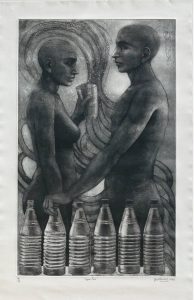
Courtesy: Latitude28
Sud is also known for her dignified portrayal of women figures. The identity of a woman in her works does not remain narrowly restricted to her body but also accommodates individual subjectivities. As Ghosh mentions, “Even though the woman in [Sud’s] narratives exist and struggle within the limits of the grand narrative of the patriarchal structure, there is a refusal to reduce oneself to become the mere other to the Absolute of the male.” Sud even subverts the male gaze in her portrayal of women by investing them with autonomy over their own sexuality and experiences.
Speaking on her choice of themes, Sud said, “All artists reflect what they experience and I am no exception. My themes come from society as I am part of society and do get carried away by what is happening around.” Despite grappling with social concerns in her works, she does not consider herself to be an activist: “Yes, women have a right to make choices and men can’t dictate their decisions. But my concern for women’s deprivation or other social issues does not mean I am a social activist. Were it so, I would forsake everything and dedicate myself to social welfare.”
Mary Cassatt
An American expatriate living in Paris, Mary Cassatt was one of the most prominent women painters of late nineteenth century. During a time when women were debarred from pursuing their vocation, Cassatt managed to make a significant mark in the Parisian art scene. She was part of the Impressionist group and even exhibited her artworks along with masters, like Camille Pissarro and Edgar Degas.
Born in 1844 in Pennsylvania, US, Cassatt’s desire to become an artist was met with discouragement from her parents. She began studying at the Pennsylvania Academy of the Fine Arts in Philadelphia, Pennsylvania, at the early age of fifteen. However, Cassatt’s experience there was unpleasant – not only was there hardly any learning but she also had to face condescending and patronising attitudes from male teachers and male students.
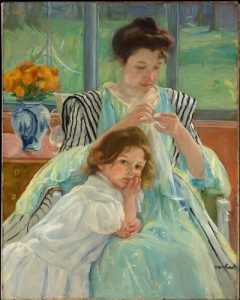
Courtesy: The Met
Even in Paris, where she shifted in 1866, Cassatt met impediments owing to her sex – women were still forbidden from training at the Ecole des Beaux-Arts. She privately trained under Jean-Leon Gerome, a highly regarded teacher. Such was the discriminatory nature of the Parisian art scene that women were not even allowed to visit the cafes where artists and intellectuals interacted with each other. Yet, a determined Cassatt managed to master her art and found recognition in 1868 when one of her works, A Mandoline Player, was selected by the jury of the Paris Salon. Cassatt would have her paintings exhibited at the Salon for the next decade.
Cassatt’s relationship with the Salon began to sour when she critiqued the politics of the Salon as well as its conventional tastes. She would also notice how the Salon jury would be dismissive of works by women unless they had favourable acquaintances within the art world. Her blunt comments naturally did not go down well and in 1877, the Salon retaliated by not exhibiting any of her works. Increasing frustration led Cassatt to part ways with the Salon and exhibit with the Impressionists instead, at Edgar Degas’ suggestion. Her fruitful association with the Impressionists continued till 1886, after which she disassociated herself from any movement and experimented with various styles.
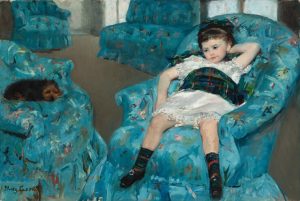
Courtesy: National Gallery of Art
Cassatt explored mostly domestic settings in her works, often dealing with the theme of the mother and child. Her works were mocked at for being ‘feminine’. However, she brought substantial technical finesse and psychological depth to her subject matters. Forever a vocal advocate for equality of women, Cassatt was also an ideal role model for aspiring women artists, sometimes even supporting them in their careers. One of them was a young artist named Lucy A. Bacon, whom she introduced to Camille Pissarro. Speaking on her portrayal of women, Cassatt once said that her goal was to depict women as “subjects, not objects”.
Bibliography
- https://criticalcollective.in/SearchResult.aspx?search=anupam%20sud
- https://www.tribuneindia.com/news/features/men-women-and-a-canvas-of-light-and-darkness-441806
- https://en.wikipedia.org/wiki/Anupam_Sud
- https://www.marycassatt.org/biography.html
- https://www.theartstory.org/artist/cassatt-mary/#:~:text=Summary%20of%20Mary%20Cassatt,with%20the%20Impressionists%20in%20Paris.
- https://magazine.artland.com/mary-cassatt/

